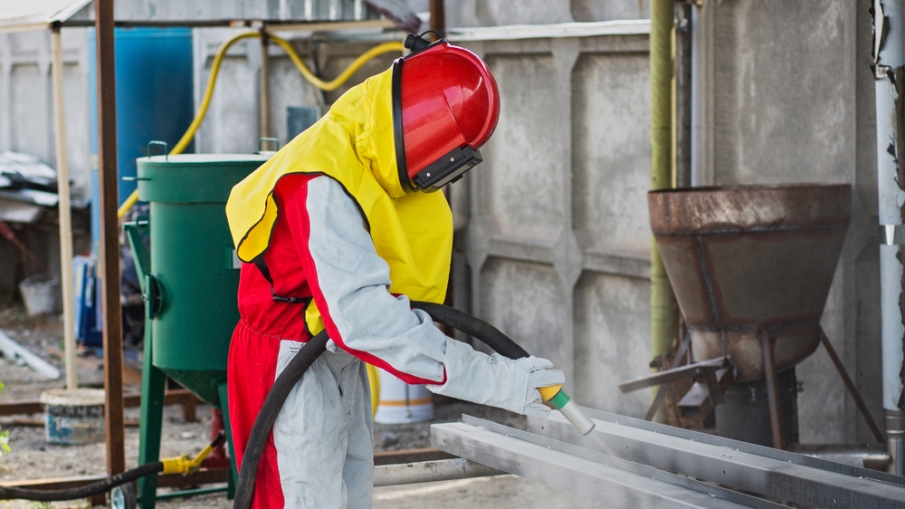Some occupations make it harder to avoid health hazards than others because of the material used for the job. When it comes to sand blasting, the use and makeup of the compressed air and abrasive media for cleaning surfaces, or preparing them for paint can cause a variety of long-term health issues. Abrasive material used for this job can contain silica, lead paint, arsenic, cadmium, and other harmful chemicals that can lead to lung cancer, silicosis, and breathing problems.
However, there are several ways workers can keep themselves from getting sick while on the job. Here are three precautions sand blasting professionals should practice in order to do their work with as few issues as possible. No matter what your source, always make sure you accept that you and only you are ultimately responsible for reading and understanding the risks with blasting.
Maintaining Good Hygiene
The most common way that we get sick at work is by not keeping our hands and faces clean on and off the job. It can be easy to forget to wash your hands after using certain material, and pollutants can get in the food that we you on our breaks for a late breakfast or lunch with coworkers. For sand blasting, workers should eat and drink as far away from the blasting areas as possible. The material can also get on your work clothes, so you should change into your regular clothes before your lunch break. Vacuuming your clothes before you change will add extra security.
When it comes to what the company can do, establishing wash stations to let employees know where to go to clean their hands and faces will help workers remove chemicals quickly and effectively. Areas where workers take showers at the end of their shifts should be stocked with soap, towels, and other accommodations so that employees don’t run out of cleaning tools. Clean clothes should also be made available close by to wear between and after shifts. Facilities for keeping contaminated clothes should be kept far away from those containing clean clothes and protective clothing so that dangerous chemicals aren’t exchanged.
Protective Gear
Those who have jobs that include sand blasting can be supplied with a variety of protective gear that can lower their risks of encountering certain health issues. Headphones and other equipment for the ears can not only keep chemicals from entering the body through the ear but also help workers deal with the loud noises associated with this job. Goggles and masks can help keep material from getting into workers’ eyes and mouth and causing vision issues or respiratory complications. Helmets can also prevent more solid material from hitting employees in the head or getting into their hair. This can be especially helpful to workers with certain skin allergies.
As far as shielding hands from sand blasting material, gloves that cover just the hands can only do so much. It’s best to use leather gloves that cover up to the forearm, and aprons help your torso and clothes stay clear of chemicals. The shoes and boots you wear while sand blasting should not only be able to withstand the material, but also be designed to stay on without slipping off when working in wetter environments. Respirators are extremely helpful because they protect the user’s head, neck and shoulders from dust and abrasive material that can rebound off surfaces. However, you should make sure that your respirators are NIOSH-approved before using them.
Proper Training
Knowing how to use equipment when you first receive it will go a long way in avoiding health hazards down the road. It is important for people who are just starting to use sand blasting equipment to be trained until they understand how they operate and when to use them. This includes what protective gear to wear while operating abrasive blasters, the health hazards that come with improper use, and how to place them in abrasive blast cabinets and other storage facilities. All employees, both new and seasoned, should receive education when the company starts using new equipment, which can come in the form of instruction videos and demonstrations.
Employees should be given documents about health hazards associated with sand blasting as soon as they start the job, as companies are obligated to supply them under OSHA’s Hazard Communication standard. However, workers should dedicate just as much time to understanding what kind of breathing, hearing and vision issues they could encounter if they don’t use equipment the right way. New employees should become familiar with the facilities right away so that they know where to go to put equipment away and where to go to get cleaned up between shifts. Lunch breaks are a great opportunity to do this.
Put these precautions into practice so that you can engage in sand blasting safely and enjoy a safe working experience.


Leave a Reply